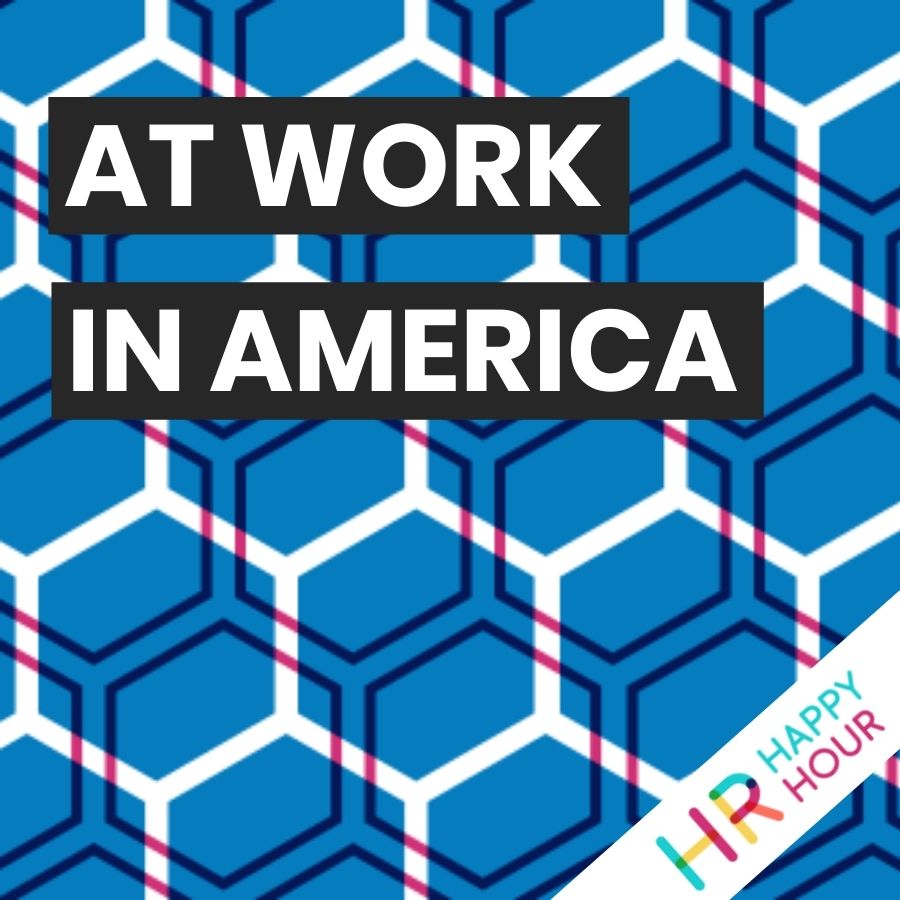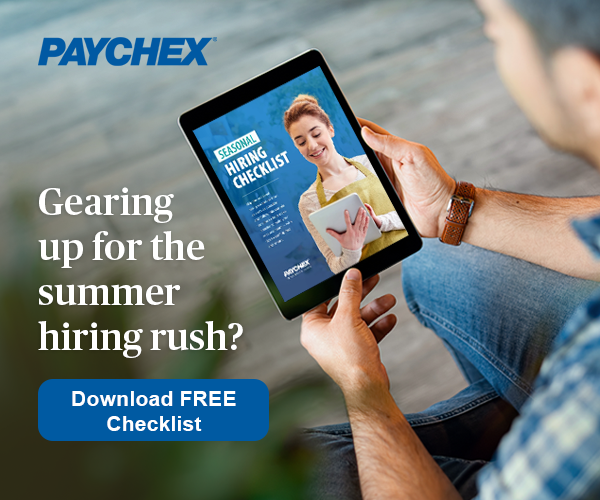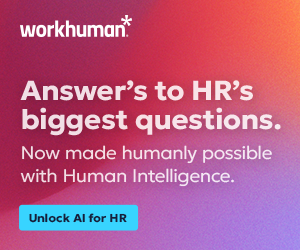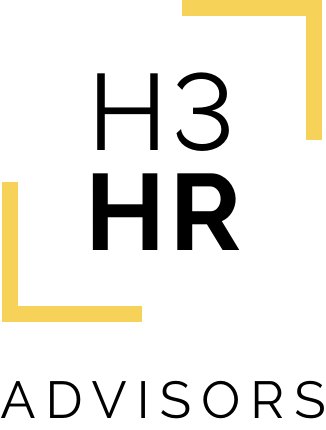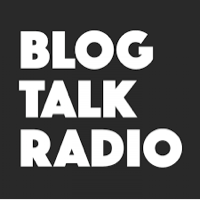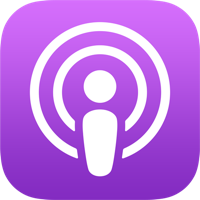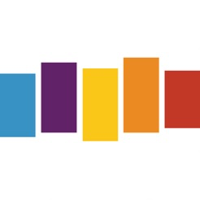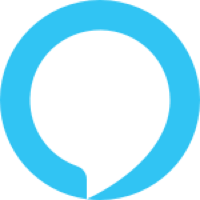Taking the Pulse of HR with Paychex
Hosted by

Steve Boese
Co-Founder and Chief Data Officer of H3 HR Advisors and Program Chair, HR Technology Conference

Trish Steed
Co- Founder and Chief Strategy Officer, H3 HR Advisors
About this episode
Taking the Pulse of HR with Paychex
Hosts: Steve Boese, Trish Steed
Guest: Alison Stevens, Director of HR Services, Paychex
This episode of At Work in America is sponsored by Paychex, one of the leading providers of HR, payroll, retirement, and insurance solutions for businesses of all sizes. After years of being in survival mode amidst a global pandemic, HR leaders have been challenged to get back to business — ushering in the era of the dynamic workplace.
In our 7th Annual Pulse of HR Report, find out how these leaders are optimizing the work experience regardless of where it’s done, addressing widening generational gaps, and increasing productivity not just for their employees, but also themselves.
Visit paychex.com/awia to check it out, today.
This week we met with Alison Stevens of Paychex to talk about the findings in the 2023 Pulse of HR Report to understand the current and future state of the HR landscape.
– How to be more intentional when using technology in the workplace
– How small businesses are adopting AI
– Understanding the motivation levels of different generations
– Employee assistance and elder care
– Lingering effects of the pandemic on the workplace
– Importance of onboarding programs
Thank you for joining the show today! Remember to subscribe wherever you get your podcasts!
Transcript follows:
Announcer 0:00
Welcome to At Work in America sponsored by Paychex. At Work in America digs in behind the headlines and trends to the stories of real people making a difference in the world of work. And now here are your hosts Steve Boese, and Trish Steed.
Steve 0:27
Welcome to the At Work in America show. We have a great show today Trish, I’m super excited to welcome our friend, longtime friend of the show, frequent guest on the show, Alison Stevens from Paychex, we’re gonna be talking about the latest Paychex Pulse of HR report from our friends at Paychex. And Trish, I know you’ve had a chance to look through the report as well as I have, it’s a great report, it’s gonna be a great conversation.
Trish 0:52
It is and you know what I’m really excited we have Alison on because she’s going to dive deep into the report. And when I think back to working in HR, this is what I wish I would have had to help go to my C suite and and backup some of the sort of, you know, very nebulous thoughts I was having at the time. So, yeah, it’s really it’s such a gift that Paychex give to all of us, regardless if you’re a customer or not so excited to share the goodness.
Steve 1:18
Yeah, and before we welcome Alison formally and officially let me just thank Paychex once again, for sponsoring this show and providing this report. They are one of the leading providers of HR, payroll, retirement and insurance solutions for businesses of all sizes. And after years of being in survival mode, amidst the global pandemic, HR leaders have been challenged to get back to business, ushering in an era of the dynamic workplace. In the new seventh annual pulse of HR report, you can find out how these HR leaders are optimizing the work experience, regardless of where it’s done, addressing widening generational gaps, and increasing productivity not just for their employees, but also themselves. We will give out plenty of links today on the show, but you can go to paychex.com/awia to get to the pulse of HR report as well today.
Alison, welcome back to the show. Alison is the director of HR services at Paychex, a leading provider of HR solutions and services for Americans businesses. Alison, this is the impressive part here. Alison leads a team of over 600 HR professionals who are responsible for providing HR outsourcing services to Paychex HR clients across the US her career in HR and leadership spends 25 years in the professional services and HCM outsourcing incidents. Alison, welcome back to the show. How are you? It’s good to see you again.
Alison Stevens 2:41
I’m well, Steve and Trish. Hi, great to be with both of you.
Trish 2:46
Yeah, I’m so glad you’re coming on to share all of this great information. You know, Steve, I want to point this out, though, I think that you said that this is the seventh annual report. I’ve been out of HR officially, like as a practitioner for about eight years. So is there a coincidence, their correlation they like this is the 7th edition. I think if I’d had this report, you might have actually saved me and I’d still be in HR.
Steve 3:11
So maybe they’ll still take you back, you can come back and work work on the page.
Alison Stevens 3:19
We’d love to have you you back. Absolutely.
Steve 3:26
Allison, I’d love to maybe give us the kind of 90 seconds if you want overview of the report itself, kind of why Paychex does this report and kind of what some maybe some of the goals were this year, what you are interested in learning more about what’s happening, really taking quote unquote, the pulse of HR this year.
Alison Stevens 3:45
Sure. So you know, I think first our Why is really to be sure we can get out in front and listen to the needs of America’s small business leaders and HR leaders really understand what challenges are they facing? What are the priorities, not just in the moment, sort of where do they see the challenges coming before them over the next 12 months? And really getting out in front of that? I think the headline for us this year, is that, you know, I think all of us can agree that the digital workplace is here to stay. And when I say digital workplace, I’m talking about where work is getting done, whether it’s fully remote, its hybrid, or it’s on site, and our headlines from the sheer show that, you know, even small business leaders.
So the very small businesses are thinking ahead on how do they plan to optimize technology to be more efficient in how they were how to make their employees more productive and at the same time, ensure that their employees are thriving so that they have they have plans to really focus on training skill building overall will well being so I think if you hear nothing else today, it’s about leveraging technology to really make sure that business CES are achieving their objectives that are spanning across three major areas wellbeing, employee engagement and productivity. And in fact, I think over 95% of the respondents said they plan to make HR technology investments in the next 12 months to help address those priorities.
Trish 5:20
Thank you for sharing that just to get us kicked off. Alison, one of the things that I just want to tie in to what you said is, I keep hearing on the news, there’s always, you know, companies that are kind of coming out and saying, like, we’re bringing everybody back to the office, we’re gonna get rid of work, you know, remote work and hybrid and all these things. But it doesn’t get, you know, the reports, and the surveys don’t bear that out. Right. So I love that this sort of shows that the data proves that people are still doing all of these different types of work situations, that’s not going away, just because one or two, maybe more loud leaders out there saying that’s it. I’m bringing everybody back. So I think that’s just a really good way to kind of kick off what is important, isn’t always necessarily the fun little soundbite, you hear on the national news, for example, right? Everyone panics when they hear that, but data for for sure is showing that’s not the case. Right?
Alison Stevens 6:18
That’s exactly right. I mean, I think we saw in the data from the research that I think it’s about half of the respondents plan to maintain either hybrid or remote work work arrangement. But I think, you know, the nuance there is the data also revealed that, you know, business leaders, HR leaders are really leaning into, you know, how do they leverage technology? And how do they prioritize the employee experience, no matter where their employees are. And I think that’s really important. Um, you know, I know, we were having a discussion about some of the research findings, or we heard from some of the respondents that if they are having employees come back on site, even if it’s, you know, periodically, they are, you know, making sure that when those employees are coming on site, they are taking the time to be sure that that experience is smooth, right that when employees come back into the building, they know where to go, they can reserve a conference room or cubicle to work on. So even if you think down to like that, even that minut detail about the employee experience, it’s making sure it’s efficient and easy, really, no matter where the employee is working.
Steve 7:23
And that’s a great point. And we’re seeing organizations more and more trying to figure out how to be more intentional right about those in person or in office experiences, right? Because the last thing anybody wants to do, we’ve heard this for a little while now is three, I don’t use the word forced, but encouraged to return into a physical workplace, and then maybe get there and say, well, I could be doing this work or having these interactions at home, right? I don’t want to go to the office and just sit by myself all day or sit on video calls or Zoom calls all day, right, the things I could do easily at home and maybe more effectively and efficiently at home. So you have an intentionality? I think it’s a really big thing and how technology plays a role. We see that throughout the report, right, that HR leaders and business leaders thinking about how can we use technology in that intentional way, whether it’s to help with collaboration help with communication, I think one of the key findings I saw in the in the pulse of HR report, Alison was about helping strengthen the manager and employee relationship, augmented through technology, maybe I’d love for you to talk a little bit about that, like how these intentional uses of technology can support those kinds of relationships.
Alison Stevens 8:40
Steve, I’m so glad you brought that up, because I, as I was reading the findings, that I think is something that should not be lost on anyone listening to this podcast, or really anyone who who reviews the findings from our study, the importance of communication, and development of ongoing development of managers and how they lead and communicate with a remote or hybrid workforce, or really, you know, just in the workforce right now. Um, I think leveraging technology is key, but it’s also about how to use it. Right? So are you, you can’t think we can all agree that you can’t replace that interpersonal connection when we’re talking to each other on video. But how do you continue at least continuously lean in to really like taking note of those nonverbal cues or, you know, signs that an employee in fact may be struggling? What can managers do to really be sure they’re asking the right questions and having conversations that go beyond just, you know, did you finish your work today? Yes or No? Or, you know, what do you need and not really knowing, you know, based on the answers, those employees might be getting, how they can address and really leaned into their employees needs to be sure that they’re, they’re doing okay, but that they’re also feeling like they’re progressing. They understand In the sense of purpose, they understand the goals of the organization and what that means for them when they’re performing their day to day work.
Trish 10:07
You know, Alison, I wonder if having this more of a hybrid model where you are being more intentional, not just with, like you said, the remote workers, but then also your workers that are actually in the workplace with you potentially. You know, when we were all together at our jobs, I think there was a sense of not not having the transparency that we wanted, right? Maybe from leadership, there was a sense of, I don’t know, I mean, I’ve worked at lots of jobs that I loved. But there were days you could go in. And really, if you didn’t want to talk to anybody you didn’t have to write. And so I wonder if like, by being more intentional, now with this hybrid situation, if it’s actually even better for those that do either by choice or by need have to be in a workspace, will they be that much more connected? I don’t know, that’s maybe a hypothetical type question. But I wonder, What is your opinion on that? Do you think that us having this kind of data backs up that theory that it will actually help the people who are in person in a way that we didn’t have three years ago?
Alison Stevens 11:14
Yeah, I think that companies are now finding that they’re taking advantage of the best opportunities to bring people together to be in person, right. So that it is a meaningful experience, you know, I myself have experienced, right, I’m attending a meeting, and I’m going on site for a very specific reason with a very specific agenda. And we’ve, you know, all made the commitment, because we’ve agreed that the work we’re there to do can’t be accomplished, virtually. So, you know, I think it’s really been companies have been identifying what are those opportunities? How do they really make sure they’re organized around them. And then when the employees are on site, they are making the most of of those experiences so that the employee comes back and really feels energized, and motivated and inspired by those experiences. And they’re really clear, either about a business objective or even if they’re coming on site for training, right, I think there’s, there’s a lot of benefit that still is attached to that in person experience. But perhaps, you know, my opinion is, I think we’re we’re finding that businesses that are much more intentional versus just sort of broad brush are more successful in engaging their employees when doing so.
Trish 12:29
Yeah, I, you know, I think you appreciate people more, when you have sometimes a little bit of time and space away from them that that’s personal professional, right, Steve and I obviously work remote as well. But definitely when we get together, and we’re in person, and we feel like we’ve accomplished all these great things, it does energize you, and like you said, connect you in a whole different level, maybe than if we were just every day side by side, we lose appreciation maybe for the colleagues that we have.
Alison Stevens 12:59
I totally agree with that. And I found that the appreciation that I observed myself, of when I see employees coming together, either with their manager or with their peers, it’s like you want to you can’t even bought like, you know, you want to take a slice of it and bring it on, you know, just that energy. But I think you said it Trish, the appreciation is is so clear and palpable anytime you bring employees together again, for for a particular purpose, or a particular reason, or even if it’s just to get together and reflect and celebrate, you know, the things that everyone has accomplished while working remotely.
Steve 13:37
Alison, I want to dig into one area. One of the things we talked about a lot on this show over the years, we spend a lot of time on, especially once we spend a lot of time with technology, technology organizations, etc, is how technology is becoming more ubiquitous in the workplace, and also how new technology is becoming more available and becoming more adopted by even the smallest organizations. And I’m gonna read one data point from the pulse of HR survey, I’d love for you to comment a little bit about this particular area, Alison, which is the use of AI, right, which is what everyone is talking about, kind of in the world of work lately, right? It’s especially these days. But one of the data points from the report is more than 75% of HR leaders like companies with 20 plus employees plan to use AI tools and technologies in the next 12 months. And just over half 51% of companies say the same five to 19 employees. Those are small, small companies. I’ll send but people want to get into this AI space. I’d love for you to comment a little bit about that finding and then maybe more generally about how smaller organizations are looking into these tools.
Alison Stevens 14:46
Sure, and I agree those findings were really interesting, right? AI is certainly a regular topic of conversation whether you’re talking about business or or other uses and AI think what we saw were that companies have plans to use AI for things like tracking applicants assessing employee satisfaction. So making sure they’re gathering the right data, even helping to identify the potential candidates. Using things like AI generated ads online, using it for their ATS systems, automated applicant tracking and interviews. So really collecting all that data, and using it to be much more efficient and ensuring they can attract and retain the employees that they need to hire to operate their business. Um, and I know that, you know, even the small businesses are looking at ways that they can gather and analyze data, again, we talked about you talked about not at the same prevalence as some of the larger companies. But I think, you know, we’re even finding that small businesses are going to lean in and look to AI to how can they gather information to be able to communicate more effectively with their employees and really understand and lean into what their needs are?
Trish 16:03
I love that Paychex is actually incorporating all of these into the tools and solutions that you are offering to your to your clients. Because I do think for a long time small businesses and midsize businesses thought that these tools aren’t even available to me, or they’re certainly something that’s so far out of reach because of the cost. Could you talk a little bit just about maybe the relationship or the client feedback you have in terms of how are they adopting some of these technologies? Is it fairly easy for small to midsize businesses to kind of jump in if they haven’t before? Because obviously we see that the desire is there. How is it actually in practice?
Alison Stevens 16:45
Yeah, that’s a really great question, Trish. So you know, I think we found in the study that that smaller businesses, so when we talk about those five to 19, they tend to perhaps default to more manual, manual methods to perform or, or even to operate their, their HR departments. So at Paychex what we found is, you know, we really have to lean into understand their needs, and talk about what are their business objectives so that we can really match our service levels and match our solutions to help them see, hey, technology really is going to help you work more efficiently. So making that investment, you know, not just in helping to process your payroll, but timekeeping, right, you know, making sure that you have a really sound way to manage the time of your employees, making sure that you’re working as efficiently as possible to be able to spend time on the larger, more strategic business objectives.
And that’s really where we can help we because we’re able to remind those business leaders and there’s those HR leaders, like, Hey, we’re here to help you with your business needs and help you address those business needs. And an investing in technology is going to help you be more efficient, not only in the way that you work, that you can spend time on those more strategic actions, but also helping your employees be more efficient. So you know, I’ll give an example, right, we have the technology that allows for leaders, managers at companies to be able to have conversations with their employees digitally. And so saving time right to having to be able to find that employee or that or that manager, again, if they don’t feel comfortable talking with them virtually, or they don’t have the ability to talk to them in person, being able to, you know, access a digital platform that enables them to speak efficiently, and you know, easily to ask questions, either have their our HR department, or even have their own manager to sort of get the work done, keep things moving and keep them productive.
Trish 18:44
I think there’s also the element of a more secure way to have that conversation, right? And also to have it within your HR system, instead of sitting in an email somewhere, right? Because as you know, those can get leaked out. It could be the person leaves the company, and then that information is gone, you know, depending on what the conversation is about. So I think there’s there’s those elements to that. Regardless, if you’re a five person business or a 5000 person business, you still want to have that same safe, secure conversation, ability between colleagues. Right?
Alison Stevens 19:24
Absolutely. It’s secure, it can be also be confidential. And I think when we talk about well, being right is one of the major themes we saw as business leaders and HR leaders paying attention to in our, in our pulse of HR study, that that sort of starts to all tie together, right? They can have a contract calm, they can ask a confidential question around something they need that may pertain to their well being that they are feel confident that the information is secure. And then companies are able to you know, take that data and collect it and be sure that they’re really lean Manet monitoring, what are the needs of my in my current workforce, and I think again, that goes back to small versus large, whether you’re you have five employees, or you have 2500 employees, you still at this time really need to understand what’s happening, what’s going on in the mindset of your employees so that you can match your strategies and actions to make sure you’re not only meeting business objectives, but you’re making sure your your employees are, you know, happy, healthy, secure, and understand what’s going on.
Steve 20:24
Alison, you one of the things in the report that I found really, really interesting as well, and I like this, and some people don’t. And I’ve said, every time this topic comes up, I always say I really like talking about this, which is understanding motivations, and levers that and things that matter, to folks in different generations. Like some people again, we’ve been since ever since the kind of millennials became a thing. You know, some folks argue, oh, don’t everybody, you know, he’s individual, everybody’s kind of the same people on one thing, and others say, like me say, Well, no, I think it’s important to understand where people are in their life stage generally correspond or career stage, which generally corresponds roughly to how old they are just does, right. That’s how the world seems to work. And I really found it interesting in the Pulse of HR report, Alison, that has looked into this a little bit, in fact, to understand what HR leaders and small businesses and up to midsize businesses as well are, how they’re engaging with different generations and maybe some of the tactics that they’re using, both for recruitment and perhaps retention, perhaps development, training, etc. Was there anything that stood out to you in that portion of the report about how organizations are approaching, you know, these now four, maybe even five, and some crazy organizations, generations, at work and in the workplace?
Alison Stevens 21:46
Sure. Some of that data was was really interesting. And I think more and more companies and business leaders need to understand it, so that they can be sure that they’re developing the right, the right people, strategies to meet the different generations and how they prefer to either work, or what their what’s important to them. So I’ll give just a run through just a few quick examples, you know, our Gen Z employees, right, are looking to training opportunities, right? That’s where they’re really focused on like, what is the training that you’re going to provide me as an employer? Do I understand the company mission, and I think that’s where, you know, having a really strong onboarding program, it’s critical to to small and medium sized businesses alike, you know, so that they’re really communicating that the company’s mission at the upfront, to be sure that everyone is clear, not just our Gen Z ers, but but that everyone is clear on the sense of purpose for the company, millennials, you know, similarly, also looking for, for understanding and ensuring that there’s strong communication around company mission, but also soft skills, you know, what are those things you’re going to help me do to be sure that I can be successful in my role?
You know, Gen X, we saw, you know, a focus on what are those benefits? What are the benefits that you’re going to provide to me, and then I can talk for a second about about some of the emerging benefits, and that we saw as being important as we look towards the future, and making sure that companies are emphasizing inclusion. So, you know, an inclusive workplace is something that’s important to Gen X. And then, you know, baby boomers. Lastly, you know, also focused on benefits, flexible work schedules, making sure they have the flexibility to be successful. And I’ll just, I’ll just touch quickly on some of the things we heard from HR leaders on types of benefits that they plan to offer, as we look at the next, you know, things like an employee assistance program, again, tying back to to well being the concept of an employee assistance program has been just it’s been part of the conversation for many, many months since we’ve emerged from the pandemic. But I think now companies are truly understanding the benefit.
Going back to what you were saying, Trish of having, you know, an additional outlet and vehicle through which they can have confidential conversations and get third party support and help for a wide variety of topics to include mental health and well being shorter work weeks. So the four day workweek, you know, I think is another emerging benefit that companies are looking towards state daycare cost assistance, so helping with their family care, financial counseling. So you know, I think under that heading of well being is financial wellness, we cannot forget about that. Elder Care. And then lastly, HRA or Health Reimbursement Arrangements, were sort of those top benefits that we saw emerge from the study, which I thought was really interesting.
Trish 24:38
I’m so glad that they’re all obviously all important, but I’m so glad that EAP came up as important because having worked in HR for like two decades where we did have EAP available, but it was most people were embarrassed to say they needed an employee assistance program. It was like the stigma that oh my gosh, if you’re going to talk to Someone about, you know, something very confidential, very personal. But, I mean, that could be everything from financial advice, right? Maybe you’re buying your first home, and you need to learn how to do that, or you’re buying your first car, right on your own out in the world as a brand new employee. Everything like through the the entire personal life cycle, right? What I love is that this study shows that we’re now ready to talk about that. And I do give credit to millennials a little bit, but mainly to the current generation coming into the workforce. They’re really pressuring those of us who were not as comfortable talking about that years ago, to where now I think we’re getting more comfortable. So I love to see that one. The other one, and I’d love to just hear if you have any additional thoughts on that is the eldercare piece, we’ve talked to several leaders about the challenge that especially Gen X is facing with maybe dealing with both child care, or kids going to the military or college or trade school, and also caring for a parent or grandparent any other insights that you gathered from your your team gathered from this study around elder care and the need that employers should really be paying attention to this.
Alison Stevens 26:15
Yes, I think, like one of the things Trish, you know, we talked about, you know, leveraging data to understand the needs of, of your employees. And so I think, you know, if companies do have plans to use AI to understand the sentiments of their employees, it’s really understanding, you know, what are their what are the types of benefits such as eldercare that they really are looking to their employers to offer so that they have that peace of mind, and then they can be more productive when they’re at work, because they know that they have, you know, the support and a method to which they can arrange for, for their elder family members to be taken care of. And I think that’s a growing, you know, that’s a growing conversation, you’re starting to hear more and more, and companies are really can’t ignore that benefit as we move into the future and look at the varying generations of the employees that work in our businesses, and you don’t want them to, you know, I was gonna say be distracted, but that’s not really the right word, right? It’s more of the peace of mind, right, the peace of mind that, in fact, may enhance and help their own well being right to say I have a family member who’s being taken care of, and I know that I have the peace of mind that I have my company offers the benefits and will support me here.
So I think it just, it’s going to continue to be part of the conversation. And there also might be a connection into an employee assistance program, right? Finding, finding the ways that you can understand what are your options? What type of access do you need? What types of what are those care out options, helping you make the right financial decision? So you start to see right how the various benefits connect, always connect back to well being, and making sure our employees feel supported. So they can they can feel safe, feel secure, and also feel that their companies are supporting them so that they can be most productive when they’re at work.
Trish 28:13
I wonder too, if, you know, the baby boomer generation was so much larger than Gen X, that maybe we didn’t hear as much about this. Because in terms of boomers taking care of their parents, there were just more of them to do that. Right. And so now, it’s Gen X taking starting to take care of baby boomer parents. Right and right, and there are fewer of us to do, the pressure seems magnified.
Alison Stevens 28:42
Like the funnel has inverted, you know, absolutely. Yeah, no, that’s that’s a that’s a very real thing.
Steve 28:49
I’ll say the last thing I want to highlight here on again, I’m gonna encourage everybody to go to Paychex.com and download the Pulse of HR report, because there’s way more in there than we’re able to get to just in our conversation today with Alison. But one more thing from the report data I wanted to highlight, because it’s interesting to me is we want to all feel like okay, the pandemics now behind us, it’s all over with, we’re moving back, you know, and some of that’s reflected in organizations really trying to claw people back into work locations, who maybe were on hybrid and remote work for a long time, et cetera, et cetera, like we want to sort of for let’s go back to the quote unquote, normal, right, or 2019, if you will, and some of the positive HR report data shows that big challenges for companies 20 plus employees, I’ll give you the top three here, which really feel like pandemic kind of things to me still are outputs of the pandemic or outcomes. Employee burnout number 130 2%. Why quitting? Right? We’ve heard that for a long time, that term it got coined and became a thing during the pandemic. 27% still concerned about quiet quitting. And finally, this one is shocking to me because I don’t know how people do this. full time employees working another full time job second job 25% said they’re still concerned by this, which means it’s a real thing, right to some of many of these organizations, whether you want to talk about any of those specifically Alison or just more in general about, hey, we might want to feel like, hey, the pandemics over but some of these lingering effects of the pandemic era on working workplaces are still concerns in many, many organizations, particularly many small organizations.
Alison Stevens 30:25
Yeah, and I’m glad you brought that up, Steve, because I do agree, right, it’s like, there are certain aspects of those conversations we’ve now been having for, you know, 24 plus months, and we’re still having the conversation, and then emerged in in the research findings, I start to make the connections still, and I’m gonna sound like a broken record, I will admit it, but coming back to, you know, employee well being so is burnout, a factor of, you know, the employees who perhaps are part of an organization where both business leaders and perhaps HR leaders have more work to do around making the stronger connection between engaging with their employees on what they need, understanding how to ensure they’re properly building their skills and developing them towards the future. And whether the future is, you know, promotional career path or future towards what the business objectives might be. That’s sort of one one area that I think, is sort of a residual of, of what we’re seeing. And then, you know, I think, that second job piece, I also found to be pretty fascinating, because it’s topped in the top three,
Steve 31:35
really surprised, right?
Alison Stevens 31:37
Is it still a function of just economic volatility, and, you know, the fact that, you know, the cost of, of consumer goods is still quite high, and people with large families, you know, who still have lots of family expenses to take care of, of their, of their families, and, and all of those expenses are requiring them to take a second job. And we saw that, you know, across both the very small and the larger businesses, in our findings, and so does that then kind of take you back to burnout. So, right, like, I started to see kind of a, you know, circular relationship between the findings of the research. And again, going back to, you know, the fact that business leaders, HR leaders, are, are telling us, they’re going to be investing in technology to address you know, understanding not just the data, but also just being sure they’re focused on the connections, the skill development, the well being of their employees, so that they feel fully supported sort of given these themes that are still very much prevalent in today’s in today’s workforce.
Steve 32:43
Yeah, I appreciate that. Alison, it’s fascinating stuff. I mean, I couldn’t imagine like, how people can pull off some of those things like working two full time jobs, but but I do I love that sort of approach to thinking about it often, it can be very circular nature, right? Burnout, extra work, taking on more work, their concerns about their family concerns about, you know, providing that feeds into that wellbeing story and that burnout story, and it can finally continue to perpetuate. And yeah, it’s, it’s tricky, right? There’s a lot to manage. There’s a lot for HR leaders and business leaders to navigate through right now. I am thankful that we can come here and our friends that paychecks as well can offer as much support as we can and resources and insights to help organizations try to, you know, make some sense of it all and try to figure out some direction and some advice on where to elektrische that, like I could have used this kind of insight, you know, a 10 years ago,
Trish 33:42
I think the other thing that I’ve seen just in our, you know, years of partnering with Paychex on many different things is it’s that element of really working with those small and midsize business leaders who, in my opinion, have even more leeway when it comes to creatively addressing some of these I say problems but you know, when you’re talking about things like burnout, or quiet quitting, or some of these topics, you have maybe a little bit less red tape to sometimes deal with. And so I find it that when I’ve had those HR positions in those size companies, you can be really creative. So you know, Alison, you mentioned like maybe maybe people are partly burnout because they are feeling this pressure from you know, groceries are more expensive, right? So a small business you might actually be able to partner with your local market right and come up with some creative solutions or what right a delivery services things like that, where, you know, an enterprise sized company might not even have that luxury of approaching in a very caring human way. How to engage and make people feel included and cared for and, and really part of things in a way you know, that I think is really needed right now. We all want to feel like we’re heard, seen and uncared for. So I love that the data backs that up in terms of being able to really support your employees, and then have a have a vendor partner who can also help you creatively. Think about supporting your employees, could you maybe share a little bit of story or two about how you’re working with your clients to do that? Because I want to make sure that people understand this isn’t just, oh, here’s a technology solution. And, you know, now you’re just kind of forgotten about you. Oh, yeah, I’ll do way more than that.
Alison Stevens 35:33
Thank you, I appreciate that we do, we do a lot more. And every time I’m here with you both, I have to make sure that I express deep gratitude and appreciation for my team of HR professionals, who help support the small businesses in America with what they need right now, right to ensure that they’re taking care of their employees. You know, so many examples. But I know, probably more recent examples that come to mind are, you know, we’re seeing small businesses approach us and they really want to be sure that their onboarding programs are sound. So making sure that everything from you know, just the the A to Z on Hey, the employees, their first day is coming, and I want to be sure I have everything locked in, you know, all their information and a method and a way for their paperwork and everything to be locked, locked and ready, so that when they start, they have a smooth day. But also, you know, going back to what we were talking about earlier, you know, company mission, making sure that they have those creative elements that still speak to what is their company about? What is their sense of purpose? And what are they here to do, and we can help that we can help with brainstorming ideas, and almost bringing to them the network of what they need, and what we’ve seen other companies do, and bringing those ideas to them.
And I think that’s what I also loved about a lot of this research, you know, I think it underscores the need for business leaders, HR leaders, you know, to really seek out their networks, both inside their community, and across, you know, the platforms that they might, you know, operate in or, you know, different organizations that they might belong to, but really understanding who’s out there that can help them, you know, whether it’s Paychex or anyone else to be able to seek out they had the advice they need right now. Because really, you know, that that wellbeing, the employee experience is just so, so important and going to be continued gonna continue to be important as the research shows.
Trish 37:33
I’m actually glad you mentioned onboarding, because I’ll share a story with you that you may not be aware of. Steve and I actually have a fellow employee here at H3HR, who has a daughter who was an intern this summer, and working at a Small Business in Hospitality. They use Paychex and she went through the onboarding experience with Paychex, and had rave reviews, because she has used, she’s worked other places and had different onboarding experiences. So literally, just this month, we had someone you know, Gen Z, who’s saying I love it, they absolutely love it, they felt very informed, everything went smoothly. And that was using the Paychx solution.
Steve 38:20
I’m gonna try to get her to record a little testimonial for you.
Alison Stevens 38:22
Yes, we need that.
Trish 38:23
Yes. I was just gonna say, Steve, that’s a good example of someone who is, you know, 19 years old, 18 years old. And it’s important to them that they have a good onboarding experience, and that they have a good experience using a mobile app to check their payroll, right? This is something that is important right out of high school to people. So don’t forget those. Those, you know, students or again, maybe they’re in trade school, maybe they’re in the military, but like, don’t forget that age of person, because it’s really, really important that they feel included from day one. And I think that’s a really good example of how using the technology, it actually does pay off. I love it.
Steve 39:05
Yeah, awesome stuff. Yeah, it’s a good story, and really kind of applicable to a lot we talked about today. Alison, we scratched the surface of the Pulse of HR report and what’s happening with Paychex, what’s happening with small businesses across America, but we want folks to go to paychex.com/awia. Get the Pulse of HR report that way, and of course, through the just Paychex.com as well. We want to thank you for taking some time and visiting with us. Again, we haven’t seen you in a little while. It’s always great to check in with you and get honestly take the Pulse of HR with Paychex and with you. So thank you so much for some time with us today.
Alison Stevens 39:42
Absolutely. My pleasure. Thank you so much for having me.
Steve 39:45
Awesome, great stuff. We’ll make sure all the links are in the show notes. Great to see our friend Alison as well. Great to talk to our friends at Paychex. Trish, thank you for sharing that story as well about the real life onboarding experience that we have heard about now in our world. So It’s great stuff.
Trish 40:01
I love when that happens to write unsolicited stories that just come in. And this one happens to be from someone we know. So that’s even better.
Steve 40:10
That’s great. Good stuff. Love it. All right, we will put all the links in the show notes. As I said, you can always get all the show archives at hr HRHappyHour.net And subscribe to the HR Happy Hour Network wherever get your podcasts for our guests, Alison Stevens, for Trish Steed. My name is Steve Boese. Thank you so much for listening. We will see you next time. Bye for now.
Transcribed by https://otter.ai
Talk to us
If you want to know more about any aspect of HR Happy Hour Media Network, or if you want to find out more about a show topic, then get in touch.

